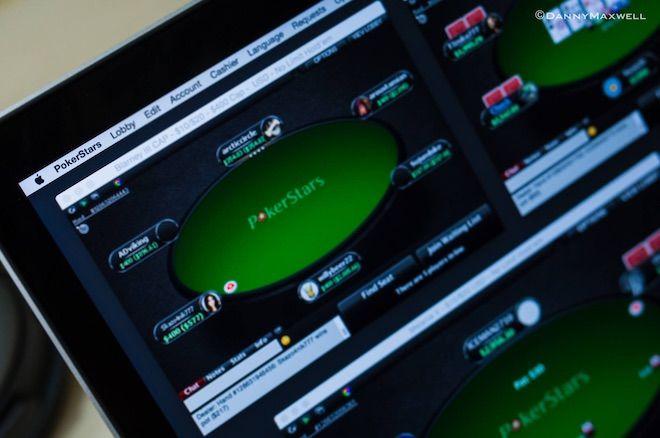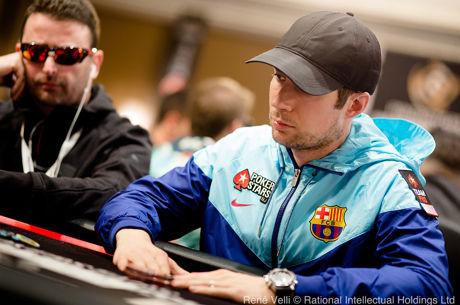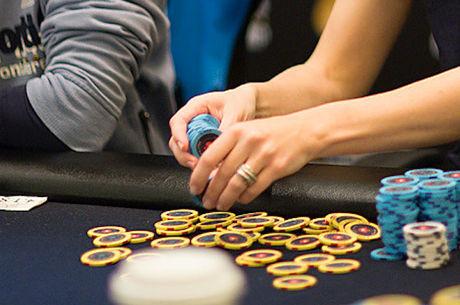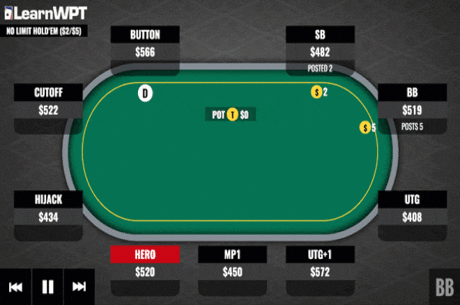What Not to Do Online: Letting It All Hang Out When the Board Pairs

Even the worst players can read the board. And these days in poker it is a big mistake to underrate one's competition, now more than ever.
If you think just any opponent is going to go crazy with a flush on a paired board, for example, you will often be caught with your hand in the cookie jar.
Monotone Flops
In a six-handed NL100 ($0.50/$1) Zoom online poker game, a middle position player opened to $2 and was called by both the cutoff and the button. Both blinds were disinterested and folded. The flop then came 9?8?4?.
Conventional wisdom says that it is hard to hit such a flop, which is true, but once it has been hit, it will often also be hard to get much action. Any suited hearts flopped a flush, any suited clubs, spades, or diamonds has not much.
So those hands that will find themselves in "way ahead, way behind" situations on flops such as this aren't actually air, but rather, low flushes and high flushes. At least sets and two-pair hands have outs against flushes, and the nut-flush draw is drawing live against everything.
In any case, the action here simply went check, bet $5, call, fold, meaning the cutoff and button were left to see the turn bring the J?. Both players began the hand $182 deep, effectively.
Raising Ranges
Protecting one's hands against equity is always of consideration. But what is the value of shutting out equity that you don't pay when it arrives and that pays you when it doesn't?
Let's say you hold 6?5? in the button's position and the cutoff has A?10?. Sure, you could raise the turn against a second barrel, charging the cutoff to draw to the nuts from out of position.
But you also shouldn't be paying off when a fourth heart arrives (save the straight flush-making 7?). And when a fourth heart doesn't arrive, A?10? is the cutoff's best candidate hand for bluffing the river. So you can win a river bluff when you know the board still favors you and not pay off when you know the runout went the other way.
Similarly the button will be looking to see how the board develops if he holds any of the three 9x8x-suited combinations or a set. Maybe he had a thin double float like J?10? that is willing to bluff on a fourth heart if checked to or can back into a winner on check-check. What's the point? The button has a lot of hands that don't want to raise the turn, even though he has a few hands (the combinations of the nut flush) that really really do.
Here the cutoff fired $12 and the button just called. The pot was only $40 going into the river with about $162 behind. That's not what the nut flush wants, but the button here should be playing his entire range most of the time, not just the top of it.
River Confusion
The river was the 8?, pairing the board which when completed read 9?8?4?J?8?.
This card shouldn't hit either player particularly often, and perhaps because Jx10x or QxJx would not call a river bet either way, the cutoff elected to check to the button who fired $27. This was met with a check-raise to $82.
The check-raise could be a bluff with the A? or it could be a value raise with a full house. To check-raise a small flush or the nut flush in this situation for value is ambitious, but under the proper circumstances could be correct.
The button responded by moving all in for $80 more. That put the cutoff in a really difficult spot.
Let's say the button had flopped an ace-high flush. Would he see any value in putting a third bet here into the pot against the river check-raise? After all, he loses to any full house while also blocking the most likely bluff. Furthermore, the cutoff is unlikely to be getting so frisky with a small flush. And if he did, he might fold to a river three-bet.
When we run through all that logic, it becomes clear there is purpose in the button shoving the river. After all, with a flopped nut flush (a hand with which he had resisted raising on either the flop and the turn), he could have simply called.
The fact is, the button's polarity in shoving the river is between full houses and bluffs.
What bluffs could those be when the button is laying the cutoff a price of $80 to win $280? Some very ambitious one with Jx10x, perhaps.
After putting everything together, the cutoff's hand actual hand �� 4?4? �� given the action, was not all that strong. He was right to check the river and to check-raise for value.
But the hand that his opponent turned up with after shoving was what he should expect to see when he doesn't catch a bluff �� J?J?.









